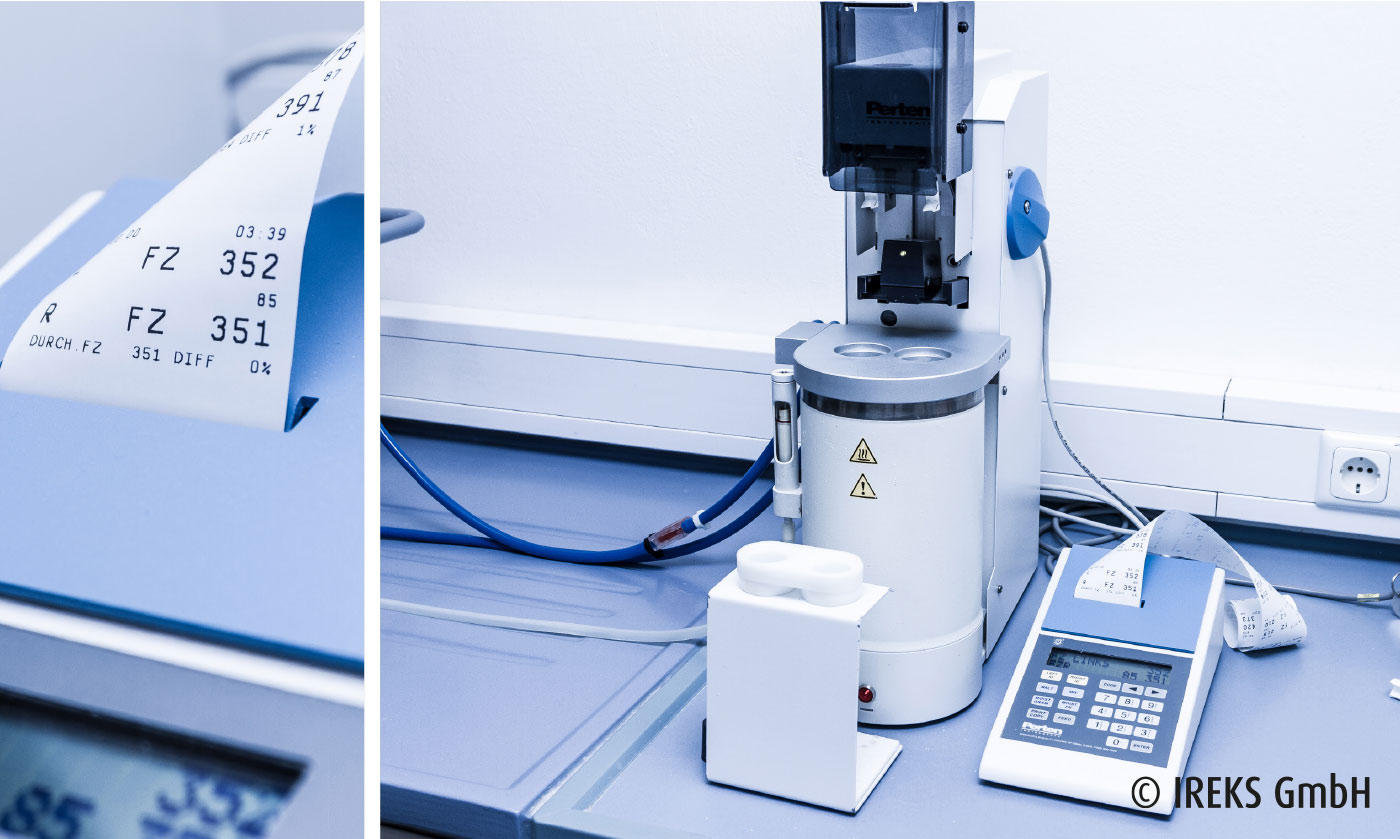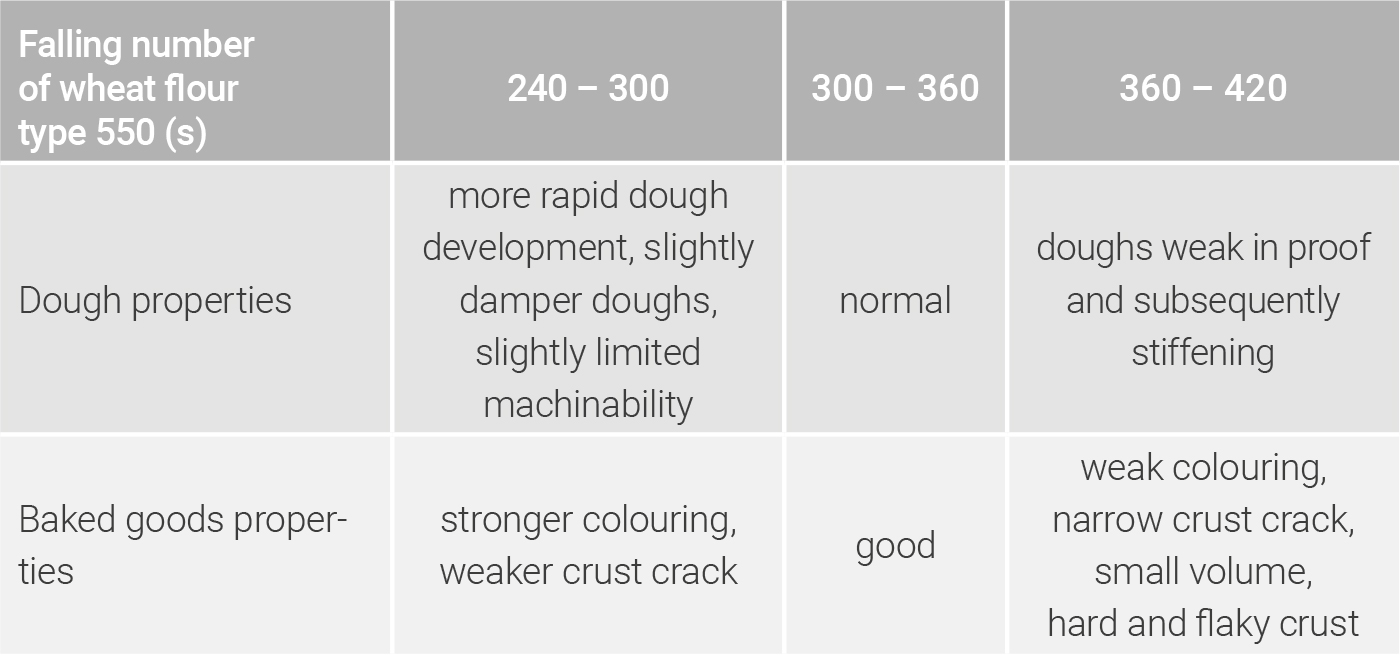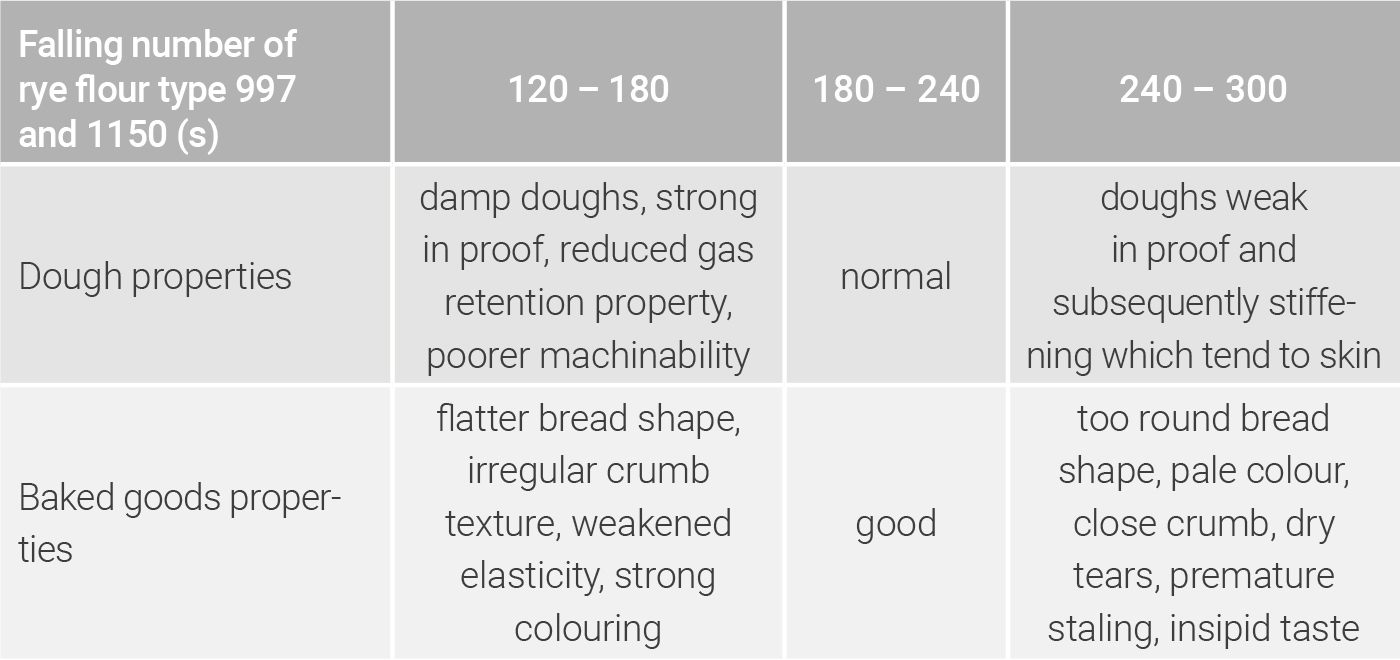In the case of the falling number method, a flour-water suspension (7 g flour with 25 ml water) is stirred in a test tube for 60 seconds. The test tube is in a container with boiling water at this time. During stirring, the starch gelatinizes in the suspension. After 60 seconds, the stirrer of the device is released and sinks through the starch paste to the bottom. The firmness (viscosity) of the starch paste thus influences the time which the stirrer requires to sink to the bottom of the test tube. This time is measured and results when added, together with the mixing time of 60 seconds, in the falling number.
In turn, the firmness of the starch paste is influenced by the α-amylase activity of the flour used. In the case of a high α-amylase activity, the starch is liquefied in part during gelatinization, whereby the stirrer sinks more quickly to the bottom. In the case of high enzyme activity, low falling numbers are measured.
On the other hand, in the case of a low α-amylase activity, the starch is hardly liquefied and the stirrer needs longer to sink through the paste. In the case of low enzyme activity, high falling numbers are measured.
The falling number is an indirect measure of the α-amylase activity and the gelatinization properties of the flour starch. High enzyme activity leads to baked goods with a strong colouring and damp crumb and to a staling of the crust. Flours with low enzyme activity on the other hand, result in low volumes of baked goods, as the yeast has too few fermentable sugar substances available.



